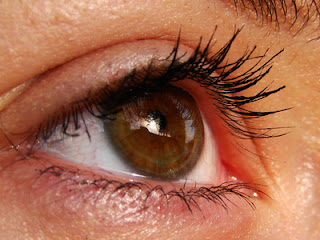Contact dermatitis is one of the most common problems seen by the dermatologist. Contact dermatitis can be caused by irritation or from an allergy to something in the environment.
Contact Dermatitis (skin allergy) is the medical term for skin irritations resulting from contact with a foreign substance that you are allergic or sensitive to. Contact dermatitis usually takes several days to resolve and only when you are no longer in contact with the irritant. Poison ivy is the most common example of contact dermatitis. Common symptoms are: itching of the skin, skin redness or inflammation, tenderness, localized swelling, warmth or rash at the site of exposure.
Allergic contact dermatitis, the second most common type of contact dermatitis, is caused by exposure to a substance or material to which you have become extra sensitive or allergic. The allergic reaction is often delayed, with the rash appearing 24 - 48 hours after exposure.
Cause
• Irritant contact dermatitis occurs when chemicals or physical agents damage the surface of the skin faster than the skin is able to repair the damage.
• Irritant contact dermatitis can appear differently according to the conditions of exposure.
• Accidental exposure to a strong irritant such as a strong acid or alkali substance may cause an immediate skin reaction resulting in pain, swelling and blistering.
• Contact with mild irritants such as water and soap or detergent may over a period of weeks cause dryness, itching and cracking of the skin. Eventually sores may appear which form crusts and scales.
• Dribble rash around the mouth or on the chin in a baby, or in older children due to licking; the cause is saliva, which is alkaline. Skin bacteria may contribute to the clinical appearance.
• Napkin dermatitis due to urine and faeces. This can affect elderly incontinent patients as well as babies.
• Chemical burns from strong acids (eg. hydrochloric acid) and particularly alkalis (eg. sodium or calcium hydroxide).
• Housewife's eczema is hand dermatitis caused by excessive exposure to water, soaps, detergents, bleaches and polishes.
• Dermatitis on a finger underneath a ring. Soaps, shampoos, detergents and hand creams may accumulate under the ring and cause irritant contact dermatitis.
• Rubber gloves or the powder or sweat or tiny quantities of chemicals that have been occluded inside them may have a direct irritant action on hands (rubber may also result in latex or rubber antioxidant allergy).
• Fiber glass may cause direct mechanical/frictional damage.
• Dry cold air may cause dry irritable skin (winter itch)
• Cosmetics may irritate sensitive facial skin (especially in rosacea) resulting in immediate stinging, burning and redness followed by itching and dryness. Gels and solutions tend to be more irritating than creams and ointments. In time, the skin may develop some tolerance to mild irritants.
• Initial treatment includes thorough washing with lots of water to remove any trace of the irritant that may remain on the skin.
• Treatment for allergic contact dermatitis focuses on prevention, by identifying and avoiding the substance responsible for the symptoms. Treatment for the rash caused by allergic contact dermatitis includes gentle skin cleansing, oatmeal baths, oral antihistamines, and topical or oral corticosteroids. In some cases, treatment with corticosteroid injections or ultraviolet light therapy may be required. Treatment for allergic contact dermatitis may require weeks to months of therapy, depending on the cause.
Treatment for contact dermatitis includes:
• Gentle skin cleansing
• Oatmeal baths:
• Oral antihistamines:
• Hydroxyzine
• Diphenhydramine
• Topical corticosteroids:
• Triamcinolone
• Clobetasol 0.05% cream, ointment, or solution
• Hydrocortisone valerate 0.2% cream or ointment
• Oral corticosteroids:
• Prednisone
• Methylprednisolone
• Injectable corticosteroids:
• Triamcinolone
• Immunosuppressive agents: rarely used
• Azathioprine
• Cyclosporine
• Topical immunomodulators:
• Pimecrolimus
• Tacrolimus ointment 0.1% or 0.03%
• Disulfiram:
• Psoralen plus UV-A light therapy




